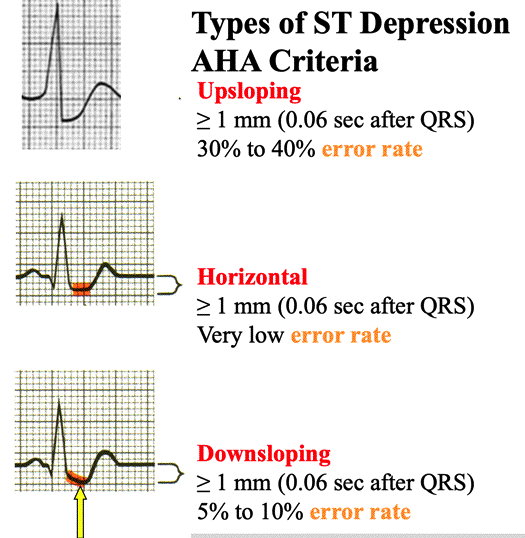| November 16 - November 20: Introducing the Ventricular and Atrial Pacemaker, Torsades de Pointes and ST Segment Elevation and ST Segment Depression OBJECTIVES: Be able to correctly indentify PVC patterning, Junctional Rhythms and Ventricular Rhythms Be able to correctly interpret Torsades de Pointes Be able to correctly measure ST Segment Elevation and ST Segment Depression Class, Please download the EXAM FIRST. We are working through MOST Exam questions in the YOUTUBE video lectures. Click Here to Download Exam 4 Part B due Friday November 20 by 12 Midnight CLICK this link and PRINT Worksheet #2 for Text Interpretations on your Exam
Please continue right into the Pacemaker YOUTUBE lecture video. |
||||||||
| Pacemaker Rhythms | ||||||||
 |
||||||||
 |
||||||||
| Class, notice in the pacemaker below there is a 'P' wave. This is referred to as an Atrial Pacemaker. Note that the QRS appears similar to a normal sinus rhythm because the pacing is originating in the atrium. | ||||||||
 |
||||||||
| Three Types of ST Segment Depresion | ||||||||
 |
||||||||
| Tips on How to Measure the ST Segment Depression | ||||||||
 |
||||||||
| 1) In many rhythms it is difficult to see where the 'S' wave ends and the actual 'J' Point. In these cases, as in the above there is a 'Flat S wave. As we have learned in class go ONE small box past the 'R' wave to establish the 'S' wave distance ('S' waves are usually about ONE small box) as shown with the Black arrow above. |
||||||||
| 2) Next, measure 1.5 small boxes (0.06 sec.) past the end of the 'S' wave as seen above with the Red arrow. | ||||||||
| 3) Lastly, simply ask yourself, 'What's Happening Here? (Blue arrow)." Is this deflection at least '1' small box or more below baseline and is it horizontal, downsloping or upsloping depression? | ||||||||
 |
||||||||
| Below are Examples of ST Segment Elevation | ||||||||
 |
||||||||
 |
||||||||
| More on PVCs | ||||||||
 |
||||||||
| 3 or more PVC's in a row can be called Ventricular Tachycardia Interpretation: NSR into Paroxysmal Venticular Tachycardia |
||||||||
| Ventricular Rhythms | ||||||||
 |
||||||||
| Idioventricular Rhythm is referred to as IVR | ||||||||
 |
||||||||
 |
||||||||
 |
||||||||
| NOTE: In the interpretation always state the underlying rhythm. For example, the rhythm above would be interpreted this way: NSR with a 1st degree AV Block |
||||||||
| Premature Ventricular Contractions | ||||||||
 |
||||||||
| Interpretation: Example: NSR with Unifocal PVCs (4th and 8th complexes) | ||||||||
 |
||||||||
| Interpretation: NSR with Multifocal PVCs (5th and 10th complexes) | ||||||||
 |
||||||||
| Interpretation: Sinus Tachycardia with Unifocal PVCs (7th and 8th complexes) | ||||||||
| Exam 4 Part B: Click here to get questions: Exam is due by 12midnight on November 20. No late papers accepted. | ||||||||
|